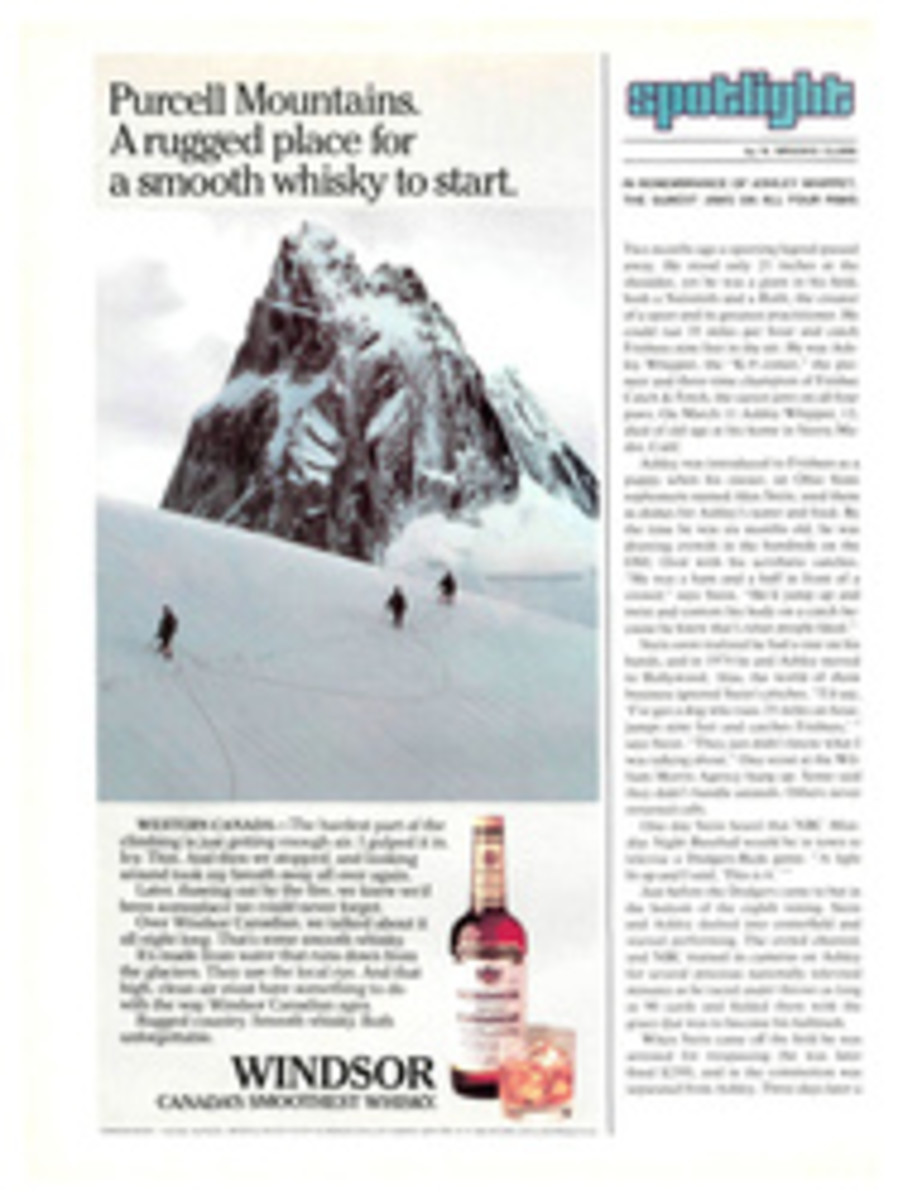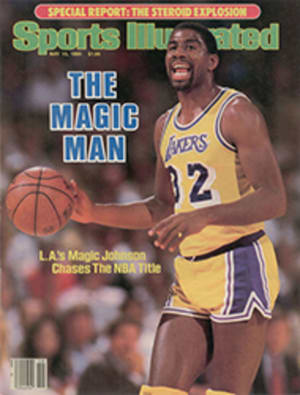
LEGENDARY STIRLING MOSS IS BACK ON TRACK FOLLOWING A 23-YEAR ABSENCE
The team's leader was a burly, drawling, red-bearded fellow who would fit better in a stock car than a sports car. The No. 2 driver was a ribald Scot named Ireland, an erstwhile Grand Prix driver and lobster fisherman. And the main attraction was a living legend, one of the greatest race drivers of all time, who hadn't been behind the wheel in anger in 23 years. On a recent spring Saturday they drove a Porsche 944 in a six-hour race for showroom-stock sports cars at California's Riverside Raceway. At the very least, they were an odd threesome; at the most, they were a media event; somewhere in between, they were a fast, smooth entry. They finished 17th, but they stole the show.
The legend was England's 55-year-old Stirling Moss. He will tell you that Juan Fangio is the greatest race driver who ever lived. Fangio will tell you that it is Moss. In 1961 alone, Moss received some 7,000 fan letters. But then came April 23, 1962. In a Formula One race at England's Goodwood circuit, Moss's Lotus dived into an embankment, and four days later the race driver woke up paralyzed on the left side. The paralysis went away after five months, but his reflexes, concentration and vision were impaired. His racing career was over, and he was just 32.
Why did Moss decide to make a comeback at 55, when he could have stayed in London doing p.r. work and endorsements? He replies that it's because his old chum Innes Ireland asked him to. Ireland, who's 54, is known for his own impulsive moves; his mum nearly fainted when Innes, at 15, came home with the news that he now had an airplane. Ireland first met Moss in 1959 when they were both driving in the Dutch Grand Prix.
"I thought I was in the big time when I got to talk to you, Stirl," says Ireland to Moss. "I should have known better."
"I can't imagine why I was so taken with you, Inny," replies Moss.
"It was because I always had these great birds, and you hoped you might be able to carry one away."
Moss and Ireland had driven together only once before. It was at Sebring in 1962. They were disqualified for a refueling infraction, and Ireland established his reputation in America by nearly strangling the offending official.
Ireland retired from Grand Prix driving in 1966. "I bought this bloody great Norwegian trawler in a moment of weakness and began a life of lobster fishing off the west coast of Scotland," he says. "Got arrested by one of Her Majesty's warships on the first bloody day out." The story of Ireland's marine exploits wanders on and finally ends "and a bottle of whisky later, he fell over the side, and that was the last we saw of him."
At Riverside, Ireland sported a T shirt that said I TAUGHT STIRLING MOSS HOW TO DRIVE. Moss had one that said I TAUGHT INNES IRELAND HOW TO DRINK.
Then there was the team leader, the car's owner and third driver, Joe Cogbill. He is the proprietor of the most exotic junkyard in Georgia, Porschware, which boasts the largest inventory of used Porsche parts in the country. Cogbill is also a two-time SCCA E/production champ, driving a yellow-and-red '58 Porsche Speedster he calls the Bucket.
There is a fourth member of this cast of characters, Moss's 32-year-old third wife, Susie, the mother of his 4-year-old son, Elliot. Susie refers to her husband's spouses as "primary, previous and present." They've been married five years, a record for Stirling. "That's my claim to fame," Susie says. "I may not have been the first, but I've lasted the longest."
But it was the duo of Moss and Ireland that got the best lines. They couldn't seem to decide which was the other's father; the distinction kept shifting in introductions. Ireland is lean and fit, although his eyes are slightly watery and he is a bit deaf. "We're going to have to get you one of those great bloody horns to stick in your ear," Moss told him. Moss is a bit rounder and balder than he'd been in his prime, but he does have that 4-year-old to flaunt.
The race was the first in a new series called the Playboy United States Endurance Cup, for cars exactly like the ones you drive. They're the real thing, showroom cars with roll bars bolted in for safety's sake, not cars that just look a bit like the one sitting in your driveway. You know, those tube-framed, gutted and sculpted "stock cars" that can reach 220 mph on the backstraight at Daytona. Your car will be better and safer because of the factories' involvement in this type of racing; six flat-out hours around Riverside uncover weaknesses no other method can. Factory tire engineers turn out in full force. You will really be safer from what they learn. In fact, Goodyear, whose Eagle VR-S is the most used tire in the series, adds $50,000 to the first-place pot for winners using that tire in each of the six races in the series.
That's one of the reasons why there were 87 entries at Riverside, including 15 domineering Corvettes. How domineering? The 14 fastest qualifiers were all Corvettes. They could hit 138 mph on the backstraight, about 20 mph faster than the Porsches. Said Cogbill, "All's a driver of one of them 'Vettes has to do is line it up and point it down the straight."
Cogbill's 944, equipped with electric windows and a sunroof, revealed some 17,000 miles on the odometer, all racked up on the racetrack. And he turned out to be the hot shoe on the team. "I know these two old boys want to have some fun, and that's O.K. with me, but I'm serious," he said, before qualifying 18th, fastest of the eight Porsche 944s entered.
Moss was chosen to start because he believed his forte was driving through traffic. His racing suit was a duplicate of the baggy coveralls he wore in his day, but of flame-retardant 1980's material. On the grid he was surrounded by reporters and photographers. "It's extremely gratifying that people have such long memories," he said. "And it's important to me that I drive well; it's a matter of pride. I don't want people to say, 'That silly bastard, he thinks he's the driver he was 30 years ago.' I know full well I'm not." He was, however, the gracious idol that he had been 30 years ago, chatting amiably, naturally and without condescension to the many fans and fellow drivers who took advantage of the opportunity to meet him. He wears legend-dom supremely well.
Moss drove quickly and consistently for two hours and 20 minutes, and moved the Porsche up to 14th by the end of his shift. A minor encounter with a Mustang scratched a fender. He stepped out of the car calmly, but his flushed cheeks from flowing juices that had been dormant for more than two decades seemed to tell the story. Susie asked him if he'd had fun. "Yes. Yes. I rather enjoyed the traffic," he replied. "But there certainly are a few wankers out there."
Ireland, who has been running showroom-stock races for four years now, took the middle shift and turned the car over to Cogbill just after sunset. They'd lost a lap when the fueling rig malfunctioned. Corvettes swept the top eight positions, the winning one being driven by Bob Carradine and Don Knowles.
At the finish the media returned to the Brumos Porsche pit. Moss and Ireland stood next to the car, satisfied and possibly even exhilarated by their showing.
They were discussing a factory ride for the rest of the series with a Porsche representative—in one of the newer, faster 944 Turbos. The turbo cars are expected to close the gap between the Porsches and Corvettes. Stirling Moss would love to win the series championship.
Just think of it: Stirling Moss.
TWO PHOTOS
GEORGE OLSON
As Susie watches, Moss suits up before taking the wheel on a new racing circuit.

